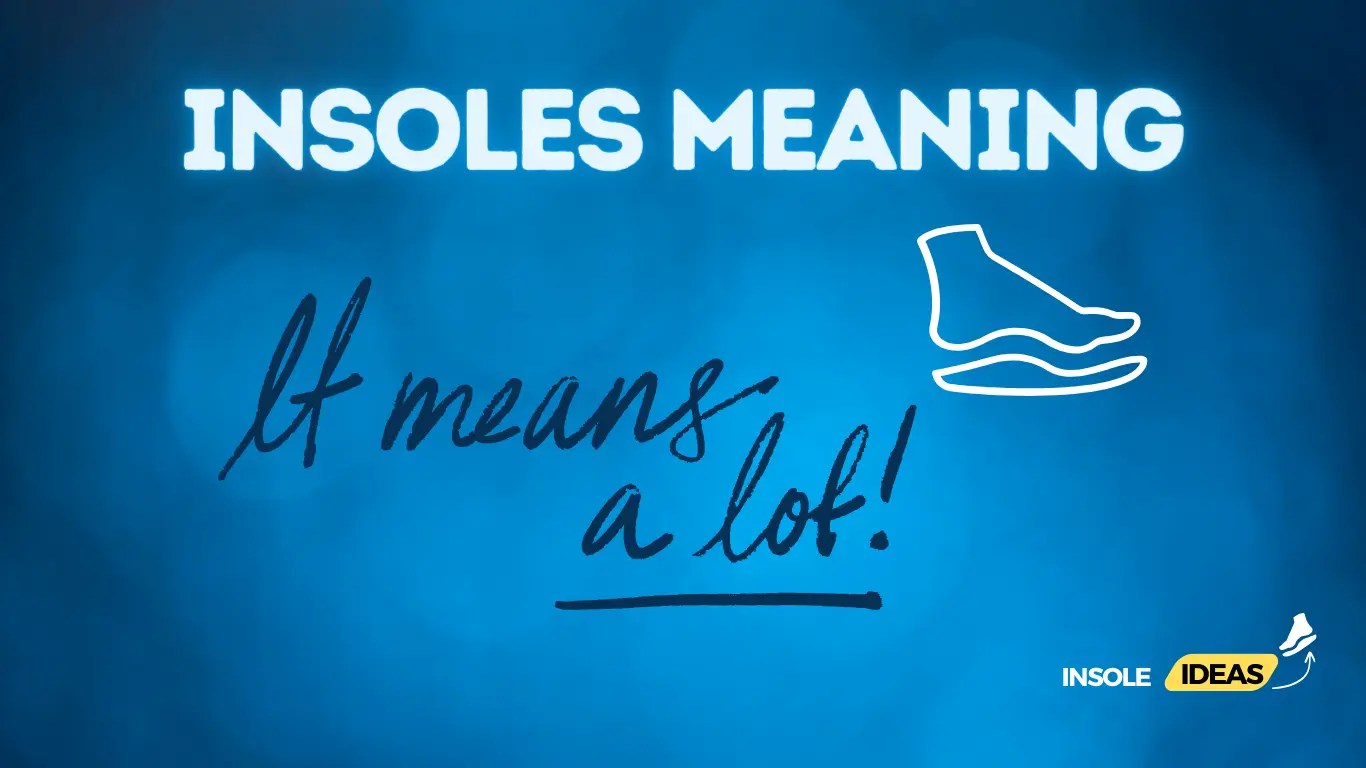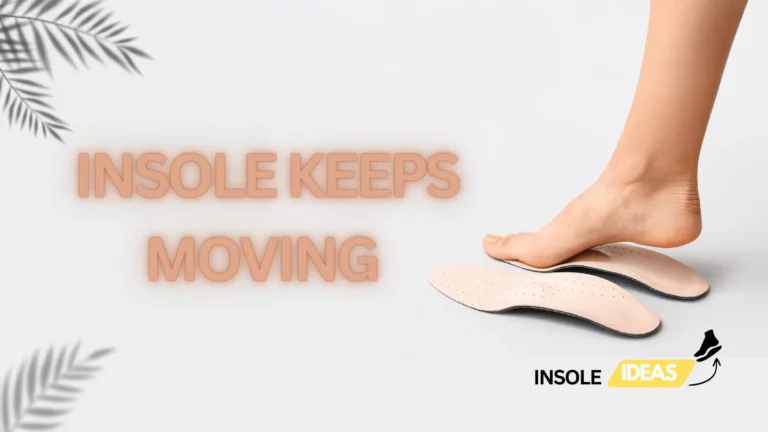Understanding the Meaning and Importance of Insoles
Insoles are often overlooked but play a crucial role in foot health and overall comfort. These inserts are placed inside shoes to provide additional support, cushioning, and stability for the feet. Wearing insoles can significantly prevent foot problems and enhance daily comfort.
Brief Overview of Insoles and Their Significance
Insoles, also known as footbeds or shoe inserts, are designed to improve the fit and feel of footwear. They can be made from various materials such as foam, gel, or rigid plastic, and come in different shapes and sizes to accommodate different shoe types and foot shapes. By providing extra padding and support, insoles help distribute pressure more evenly across the foot, reducing strain on specific areas and minimizing discomfort.
Understanding Insoles
Definition and Purpose
Insoles also referred to as footbeds or shoe inserts, are removable inserts that are placed inside shoes to provide additional support, cushioning, and stability for the feet. They serve several purposes, including improving comfort, reducing pain, and preventing foot problems.
Explanation of What Insoles Are
Insoles are designed to enhance the fit and feel of footwear by providing extra support and cushioning where needed. They can help correct biomechanical imbalances in the feet, such as overpronation or supination, and alleviate pressure on sensitive areas.
Their Primary Functions in Footwear
The primary functions of insoles include:
1. Support: Insoles help support the arches of the feet, preventing them from collapsing and reducing strain on the muscles and ligaments.
2. Cushioning: Insoles provide extra padding to absorb shock and reduce impact forces while walking or running.
3. Alignment: By promoting proper foot alignment, insoles help distribute weight evenly across the foot, reducing the risk of injuries and discomfort.
Types of Insoles
Overview of Different Types
Insoles come in various types, each designed to address specific foot conditions or provide targeted support and comfort. Some common types of insoles include cushioned, supportive, and custom orthotics.
Cushioned Insoles
Cushioned insoles are made from soft materials such as foam or gel and are designed to provide extra padding and shock absorption. They are ideal for individuals who spend long hours on their feet or who experience foot fatigue and discomfort.
Supportive Insoles
Supportive insoles, also known as arch supports, are designed to provide additional support to the arches of the feet. They help distribute weight more evenly across the foot and can alleviate pain and discomfort caused by flat feet or high arches.
Custom Orthotics
Custom orthotics are specially crafted to fit the unique contours of an individual’s feet. They are typically prescribed by a podiatrist or orthopedic specialist and are designed to address specific foot conditions such as plantar fasciitis, bunions, or diabetic foot problems. Custom orthotics offer personalized support and comfort tailored to the individual’s needs.
Importance of Insoles for Foot Health
Insoles are crucial in maintaining foot health by providing support, cushioning, and stability. They are essential for individuals of all ages and activity levels, from athletes to those with medical conditions affecting the feet. Understanding the importance of insoles can help prevent foot problems and enhance overall comfort and mobility.
Alignment and Support
Proper foot alignment is vital for overall body alignment and posture. Insoles help maintain proper alignment by providing support to the arches of the feet. This is particularly important for individuals with flat feet or high arches, as inadequate support can lead to biomechanical issues and discomfort. By promoting optimal alignment, insoles reduce the risk of injuries such as plantar fasciitis, shin splints, and stress fractures.
Adequate support for the foot arches is essential for distributing weight evenly across the foot and absorbing shock during activities like walking, running, or standing for long periods. Without proper support, the arches can collapse, leading to overpronation or supination, which can strain the muscles, ligaments, and joints of the feet and lower limbs. Insoles help stabilize the foot and prevent excessive movement, reducing the risk of overuse injuries and improving overall comfort.
Shock Absorption and Pressure Relief
During walking or running, the feet endure significant impact forces that can lead to discomfort and fatigue. Insoles act as a buffer between the foot and the ground, absorbing shock and reducing the strain on the muscles and joints. This is especially beneficial for individuals with conditions such as arthritis or osteoporosis, as well as those who are overweight or have a history of foot injuries.
In addition to shock absorption, insoles help alleviate pressure on certain areas of the foot, such as the heels or balls of the feet. By redistributing pressure more evenly across the foot, insoles reduce the risk of developing painful conditions like corns, calluses, or blisters. They also provide cushioning and support to sensitive areas, making walking and standing more comfortable, especially for individuals who spend long hours on their feet.
Choosing the Right Insoles
Selecting the right insoles is crucial for maximizing comfort and preventing foot problems. With so many options available, it’s essential to consider factors such as foot type, activity level, and specific needs.
Foot Type Considerations
The first step in choosing the right insoles is to consider your foot type. There are three main foot arch types: flat, neutral, and high. Matching the insoles to your foot arch type ensures proper support and alignment, reducing the risk of discomfort and injury.
For individuals with flat feet, insoles with arch support can help lift the arch and provide stability. Those with neutral arches may benefit from semi-rigid insoles that offer moderate support without excessive cushioning. High-arched individuals may require insoles with extra cushioning to absorb shock and reduce pressure on the arches.
Customization options for insoles allow for individualized fit and support. Custom orthotics, prescribed by a podiatrist or orthopedic specialist, are molded to the unique contours of your feet, providing personalized support and comfort. Over-the-counter insoles come in various sizes and shapes, with options for different arch heights and cushioning levels.
Activity-Specific Insoles
Insoles are available for specific activities such as sports, standing jobs, or casual wear. These specialized insoles are designed to provide targeted support and cushioning based on the demands of the activity.
For athletes, insoles with enhanced shock absorption and stability can help reduce the risk of injuries and improve performance. Standing for long periods requires insoles with ample cushioning and support to alleviate pressure on the feet and lower limbs. Casual wear insoles offer everyday comfort and support for walking or leisure activities.
When selecting activity-specific insoles, consider factors such as material durability, breathability, and compatibility with your footwear. It’s essential to choose insoles that complement your activity level and provide the necessary support and comfort for optimal foot health and performance.
Proper Care and Maintenance of Insoles
Like any other footwear accessory, insoles require proper care and maintenance to ensure longevity and optimal performance. By following simple cleaning and replacement guidelines, you can prolong the life of your insoles and continue to enjoy their benefits for years to come.
Cleaning and Hygiene
Regular cleaning is essential to prevent odor and bacteria buildup on your insoles. Here are some tips for keeping your insoles clean and hygienic:
1. Remove Insoles Regularly: Take out your insoles from your shoes after each use to allow them to air out and prevent moisture buildup.
2. Hand Wash with Mild Soap: Use gentle soap and lukewarm water to hand wash your insoles. Avoid using harsh chemicals or bleach, as they can damage the materials.
3. Gently Scrub: Use a soft brush or cloth to gently scrub the surface of the insoles and remove any dirt or debris.
4. Air Dry Thoroughly: Allow your insoles to air dry completely before placing them back into your shoes. Avoid using a dryer or direct heat, as it can cause warping or damage to the insoles.
5. Sprinkle with Baking Soda: To eliminate odors, sprinkle baking soda on your insoles and let them sit overnight before brushing off the excess.
It’s also essential to clean the inside of your shoes regularly to prevent odor and bacteria from transferring to your insoles.
Replacement Guidelines
Despite proper care and maintenance, insoles will eventually wear out and lose their effectiveness. Knowing when to replace your insoles is crucial for maintaining foot health and comfort. Here are some signs indicating when it’s time to replace your insoles:
1. Visible Wear and Tear: Inspect your insoles regularly for signs of wear and tear, such as cracks, holes, or flattened cushioning.
2. Loss of Support: If you notice a decrease in support or cushioning, it may be time to replace your insoles. Over time, the materials in the insoles can break down, resulting in reduced effectiveness.
3. Persistent Odor: Despite cleaning, if your insoles continue to emit unpleasant odors, it may indicate bacterial growth or degradation of the materials.
4. Foot Discomfort: If you experience foot pain or discomfort while wearing your shoes, it could be due to worn-out insoles that no longer provide adequate support or cushioning.
As a general guideline, it’s recommended to replace your insoles every 6 to 12 months, depending on usage and wear. However, if you notice any of the above signs, don’t hesitate to replace them sooner to avoid potential foot problems.
Conclusion
Insoles play a vital role in supporting foot health and comfort, providing support, cushioning, and stability for the feet. By prioritizing proper care and maintenance, as well as choosing the right insoles for your needs, you can enjoy the benefits of improved foot health and overall comfort. Remember to regularly clean your insoles and replace them as needed to ensure continued effectiveness and support. Your feet will thank you for it.






